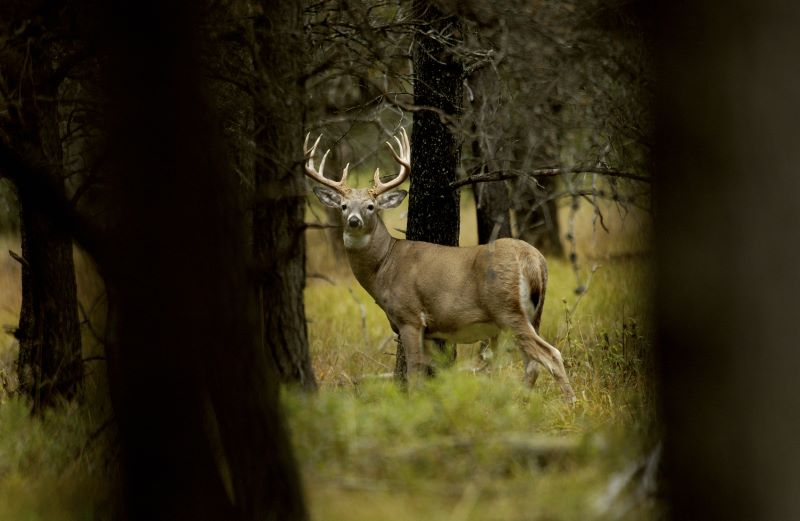October marks the end of McCarty beach days, but it brings on a new game for many Yoopers and avid huntsmen. Fawns linger in the beaten fields. Does vie for some white-tailed buck affection. And with the sprouting antlers in the woods comes the hunt for the biggest rack.
Archery deer hunting season opened across the state on Oct. 1. But before tugging back the first arrow, the Michigan Department of Natural Resources (DNR) encourages hunters to be aware of baiting zone rules and the growing epidemic of chronic wasting disease (CWD).
Though only one CWD case has been detected thus far in the U.P., this is an issue and the “best medicine” to counteract an outbreak is to put more regulations on baiting, DNR biologist Brian Roell of Marquette and Alger (West) counties said.
“I know it’s not very popular but it’s one of those things we can control. We can’t control deer licking and grooming themselves. We can’t control apples falling on the ground. But we can control baiting, and anytime you put deer in close proximity with each other, you do increase the odds of spreading the disease,” Roell said. “[It’s like] if one kid gets sick in a classroom, pretty soon they’re all sick.”
Due to one CWD case discovered in 2018 in Dickinson County, two major changes for the U.P. include restricted baiting zones in Dickinson and Menominee counties and waived antler-point restrictions on deer combination licenses in the Core CWD Surveillance Areas. Bait volume is now restricted to 2 gallons at any hunting site and it must be over a minimum 10-foot by 10-foot area. Another new baiting regulation requires that the bait must be scattered directly on the ground, and it can be with a spin-cast feeder so as long as it does not exceed the maximum volume, Roell said.
Bait piles are spread at a high frequency throughout the region and it’s one aspect the DNR can manage, Roell said, adding they hope to test approximately 3,000 deer heads for CWD. But CWD is difficult to prevent from spreading because it’s such an “insidious disease” that passes easily through saliva, urine and contaminated shared food and water sources.
Affected CWD deer are often referred to as “zombie deer” because of their overall appearance, Roell noted, explaining that they lose sight of their surroundings, they tend to drool and become less afraid of humans. However, positive CWD deer take up to 18 months before they begin showing any symptoms and eventually they die. In a year and a half’s time, affected deer can further spread this prion disease and it’s important people are aware of this issue, Roell said.
“It’s a very serious threat and it actually alarms me. I just hope we don’t have to deal with it because it will change deer hunting and deer management. I’m hoping we can stop it before it becomes a big issue,” Roell added.
Though the DNR is keeping close tabs on the CWD threat, the overall U.P. deer population looks in good condition for this season, Roell said. Winter’s late heavy snowfall in February didn’t drastically affect the deer population, and the adult survival right was higher this year. Hunters should expect to see more deer of both sexes, and younger bucks with some older bucks in the 3.5-year age class.
For new hunters in the Marquette area, Roell said people should visit the DNR office to find out more information on the new regulations and deer hunting locations. Bow season runs through Nov. 14, and reopens on Dec. 1 until Jan. 1.






























